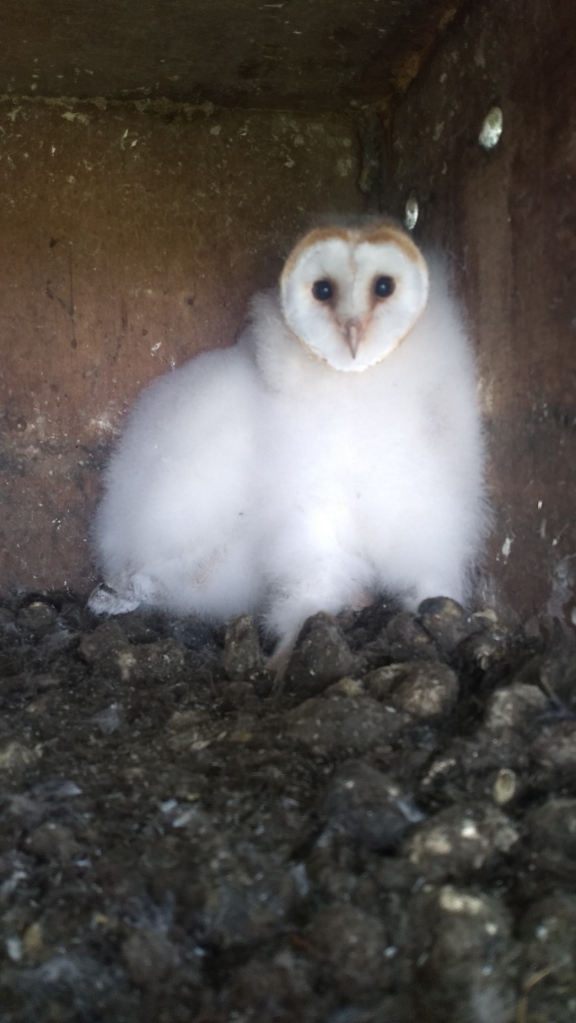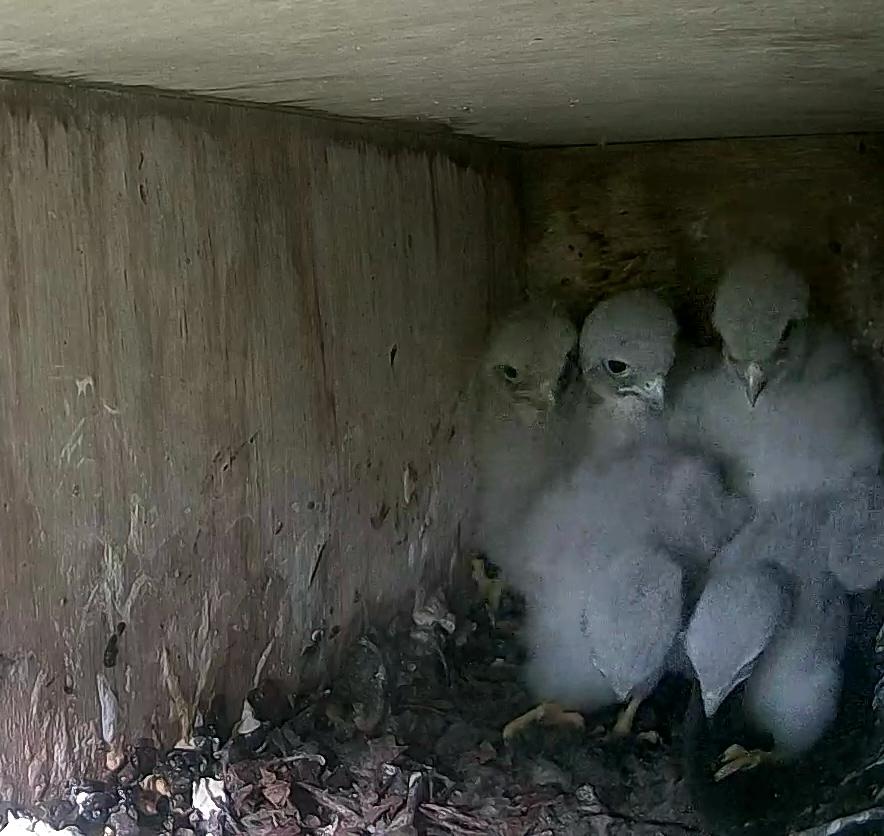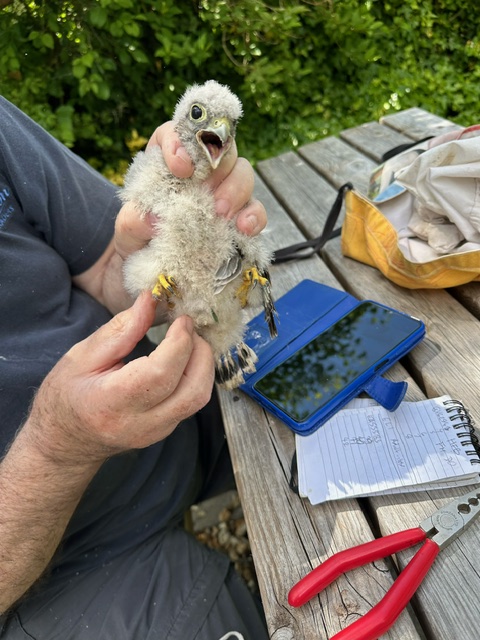I needed to recheck some of the Barn Owl boxes we visited on the 9th May. The boxes ear-marked for checking this morning were the three Wiltshire Wildlife Trust boxes. I was joined by Rosie for these checks, helping before she had to head off for work with the Trust. We found the following:
Poucher’s Field: on the first visit we discovered two warm eggs and five naked and blind youngsters. Today we found that the five youngsters have grown well, but there was no sign of the eggs. Perhaps they were food for the others during one of the many wet spells we have had. The youngsters that were left we ringed and weighed: all weighed in at decent weights. The smallest was 350g, the heaviest were two of them weighing in at 415g. There were mice / voles inside the box: it is clearly a good year for small rodents and, therefore, Barn Owls.
Allotment Field: there were just three warm eggs in the box back in May. This morning we caught a second year male on the nest. Rosie got to ring her first adult Barn Owl. Inside the box we then found five small, nearly naked, but growing down, chicks. Their wing feathers were just starting to develop: fully in pin. We will revisit in three weeks or so to ring those chicks.
Ravensroost Meadows: this was slightly disappointing. Back in May we found four small chicks and two warm eggs. This morning we found two rather large chicks, primary feathers were two-thirds grown and they weighed in at around 380g each. There was also one dead chick in the box. Distasteful as it might be to human tastes, we left the dead chick in the nest as a potential snack for the others if prey becomes a bit scarce.

Barn Owl chicks, Tyto alba
Once we had completed ringing and weighing these two we called a halt, as Rosie had to get off to work. And so to the afternoon!
Justine had been approached through the local RSPB group about ringing some Kestrel chicks in a box in a back garden on the way into Amesbury. She was sent a photo of the chicks and determined that she would be away on the Isle of Mull for the ideal two week period for ringing them, so she asked me to do it for her. I made contact with the owner of the garden and arranged to visit today to ring the chicks. He has a nest-cam set up and he sent me a video of the five of them, from which this still was taken:

Kestrel chicks, Falco tinnunculus
Nice, little bundles of fluff. Only he didn’t say when that was taken. I arrived on site at 14:30 and, with some help from the owners with a ladder and cups of tea, I managed to get the chicks bagged up and ready for ringing. They were considerably more developed than I was expecting. As you can see from the following photo, their feet and talons are very well developed:
When you are putting your hands into a box, blindly reaching for the chicks, those feet are quite a painful method of finding where they were sitting. These birds are growing nicely and the wings and tail are developing:


As soon as they were processed I put them back in the box and we retreated a safe distance for tea and biscuits. One of the queries that we often get is whether or not ringing the nestlings could cause the parents to desert their brood. I was sent the following video of the adult male delivering food to the chicks about 10 minutes after I had left site: